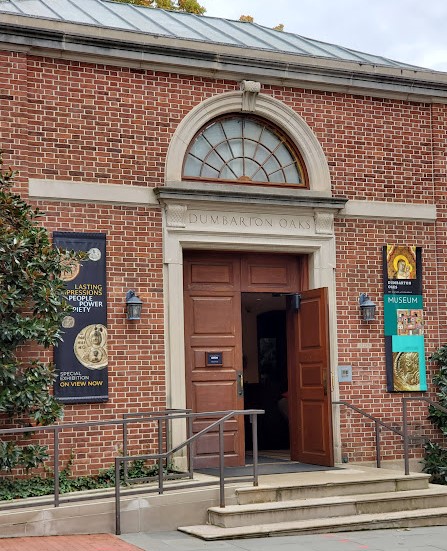
Briar Patch
Oct 1 2022 - May 8 2023
Dumbarton Oaks Research Library and Collection
Washington, DC
This acclaimed installation by artist Hugh Hayden was first exhibited in Madison Square Park, New York. It features one hundred wooden elementary-school-style desks distributed in several groupings throughout the garden.
Seventy-five of the desks erupt with tree branches, cohering into tangled assemblages with complex and shifting meanings. The accumulations of desks suggest the grid arrangement of classroom seating. The title evokes folklore traditions around the world, especially African, African American, and Native American, in which the brier patch is both protective and dangerous, a place both of adversity and refuge—not unlike schools themselves, given severe disparities in American education. The tangled branches can be read as a rebellion against uniformity, but also as emblems of intellectual development and incipient interpersonal connections.
In the Dumbarton Oaks gardens, the installation takes on other associations: histories of education in nature, of nature itself as educational, and of gardens as places of creative problem-solving. In subtle ways, it also squares off against Mediterranean traditions in the humanities, historically affirmed at Dumbarton Oaks by the gardens and, to a lesser extent, the institution’s collections and scholarly programs. Brier Patch advances a vision of the humanities at once more global, vernacular, and diverse.
In the spring of 2009, Dumbarton Oaks inaugurated an occasional series of contemporary art installations intended to provide unexpected experiences and fresh interpretations of its remarkable gardens and collections.
Credit: Overview from museum website
Exhibition Venues & Dates
Oct 1 2022 - May 8 2023
Dumbarton Oaks Research Library and Collection
Washington, DC
